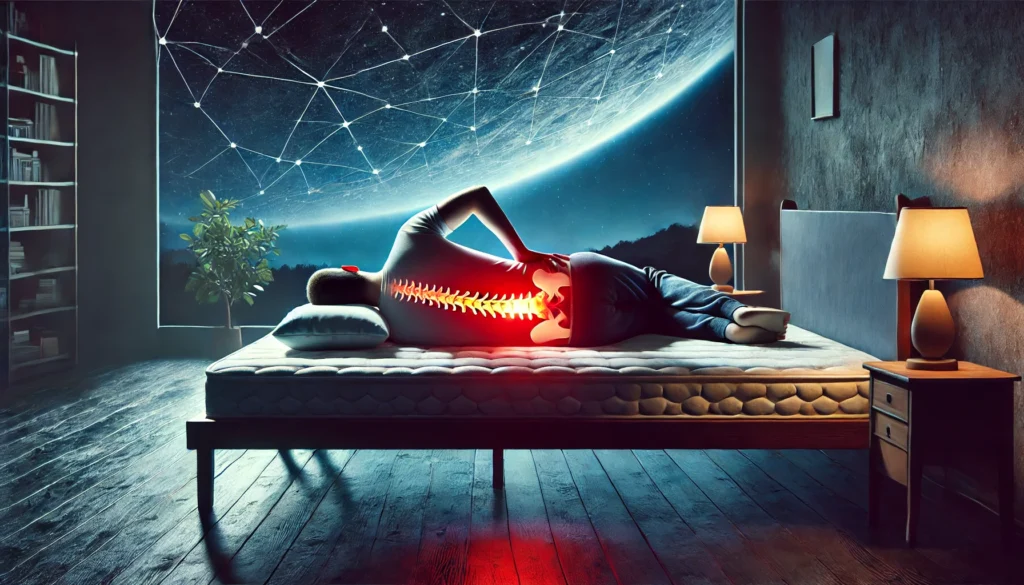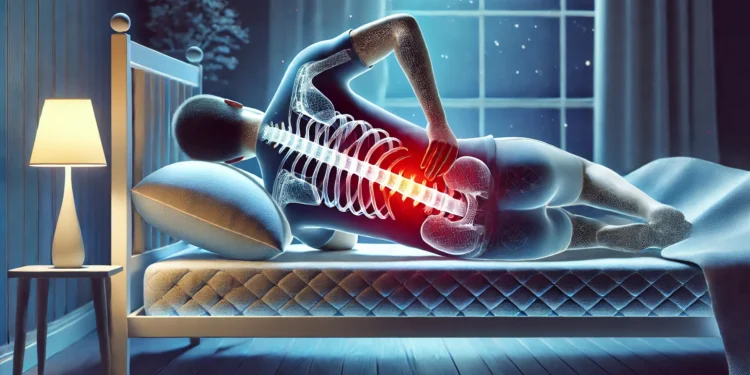When it comes to managing lower back pain, many people overlook the role that sleep plays in either alleviating or exacerbating discomfort. While a good mattress and proper sleep hygiene are essential, the position in which you sleep can have a significant impact on the health of your lower back. In this article, we’ll explore the worst sleeping positions for lower back pain and provide tips on how to improve your sleep habits for a healthier spine.
Understanding the Connection Between Sleep and Lower Back Pain
Lower back pain affects millions of people worldwide, and for many, it can become a chronic issue. Sleeping in a poor position can strain the muscles, ligaments, and discs of the lower back, leading to stiffness, discomfort, and even further injury. While there’s no one-size-fits-all solution, understanding which sleeping positions aggravate back pain is the first step toward improving your sleep quality and overall spinal health.
The Worst Sleeping Position for Lower Back Pain
Sleeping on Your Stomach
Sleeping on your stomach is widely regarded as one of the worst sleeping positions for people with lower back pain. Here’s why:
- Spinal Alignment Issues: When you sleep on your stomach, your spine is forced into an unnatural position. To breathe, you need to turn your head to one side, which creates a twist in your neck. Additionally, the curve in your lower back deepens, putting pressure on the spine and aggravating pain.
- Strain on the Spine and Muscles: The stomach sleeping position can place excessive pressure on the lower back muscles and spinal discs, leading to muscle tension, discomfort, and even the potential for disc damage over time.
- Lack of Support: Your lower back receives little to no support when sleeping on your stomach. This lack of support contributes to misalignment and can cause the muscles around the spine to overcompensate, resulting in pain.
Alternatives to Stomach Sleeping for Lower Back Pain Relief

If you’re a stomach sleeper, it may be difficult to adjust your sleeping habits right away. However, here are some alternative positions that can help reduce strain on your lower back:
- Sleep on Your Side: Sleeping on your side, with a pillow between your knees, can help keep your spine aligned and relieve pressure on your lower back. Make sure your pillow is firm enough to support your neck and head in a neutral position.
- Sleep on Your Back with Proper Support: Sleeping on your back can be beneficial if you use a pillow to support the natural curve of your lower back. Placing a small pillow or cushion under your knees can help maintain spinal alignment and reduce lower back pain.
How to Improve Your Sleep Position and Alleviate Back Pain
- Invest in a Good Mattress: A mattress that provides adequate support is essential for maintaining spinal health. Look for one that offers firm support but is also comfortable enough to promote restful sleep.
- Use the Right Pillow: Your pillow should align your head, neck, and spine in a neutral position. A pillow that’s too high or too low can strain your neck and exacerbate back pain.
- Try a Sleep Positioning Aid: If you struggle to adjust to a new sleep position, a positioning aid such as a body pillow can help you maintain a side sleeping position throughout the night.
- Stretch Before Bed: Gentle stretches before bed can help relax your muscles and improve flexibility, reducing the risk of pain from poor posture during sleep.
- Consult a Healthcare Professional: If your lower back pain persists despite improving your sleep position, it may be time to seek advice from a doctor or physical therapist. They can provide personalized recommendations for pain relief and help you address underlying issues.
FAQs:
1 Why is sleeping on your stomach bad for lower back pain?
It causes spinal misalignment, increasing pressure on the lower back and contributing to pain and discomfort.
2 What is the best sleeping position for lower back pain?
Sleeping on your side with a pillow between your knees or on your back with a pillow under your knees is ideal for lower back support.
3 How can I improve my sleep position for less back pain?
Try side sleeping or back sleeping with proper pillows to maintain spinal alignment and reduce strain on the lower back.
4 Does a firm mattress help with lower back pain?
Yes, a firm mattress provides better support for the spine and can help alleviate lower back pain.
5 Can stretching before bed help with back pain?
Gentle stretching before bed can relax muscles and improve flexibility, helping reduce discomfort and stiffness in the back.
Conclusion: Improve Your Sleep for Better Lower Back Health
While sleeping on your stomach may seem like a comfortable position for some, it is one of the worst sleeping positions for people with lower back pain. The strain it places on the spine and muscles can exacerbate discomfort and lead to chronic issues. By switching to side sleeping or back sleeping with proper support, you can improve your spinal alignment, alleviate pressure on your lower back, and enjoy a more restful night’s sleep. Take the time to adjust your sleep position, invest in the right mattress and pillows, and incorporate gentle stretches into your routine to promote lower back health.
Read More Relevant Article:
- Read Also: Upper Back Pain Between Shoulder Blades – Pain in the Upper Back Between the Shoulder Blades!
- Read Also: Qi Gong for Upper Back Pain: A Natural Approach to Healing and Relief – Using Qi Gong to Relieve Upper Back Pain!
- Read Also: Goody’s Back and Body Pain: Fast Relief for Your Aching Muscles – Goody’s Pain Relief for Back and Body!











